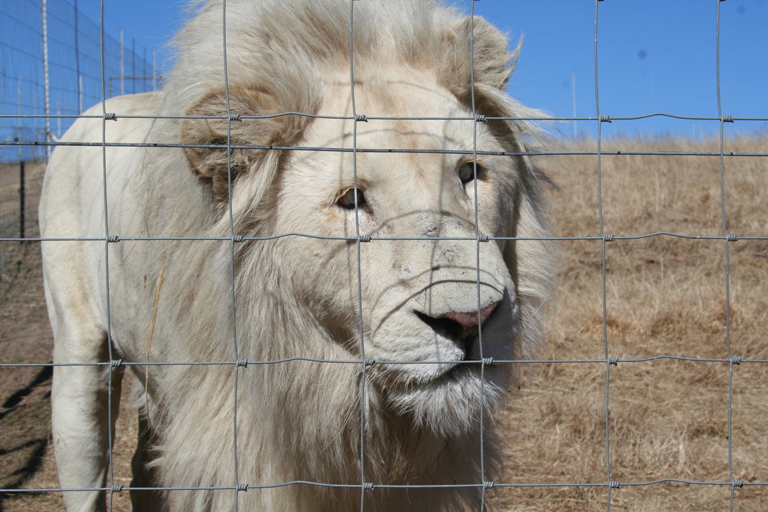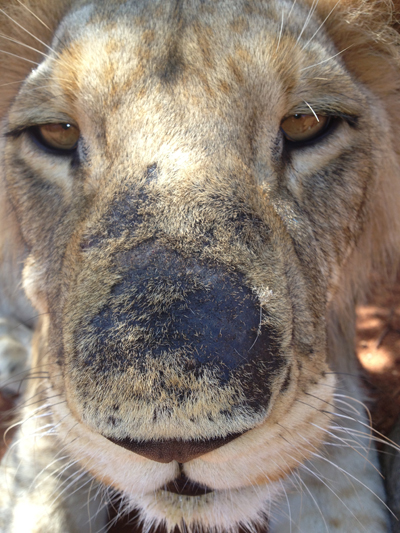- Bones, blood, and other body parts of big cats are made into products such as balms, capsules, gels, and wines that practitioners of traditional Asian medicine believe to be able to cure ailments ranging from arthritis to meningitis, though in fact they’ve been found to have no provable health benefits.
- Even before farmed big cats are killed to feed the demand for traditional Asian medicine, however, they’re treated more like products than living, breathing creatures, according to a report released last month by the London-based NGO World Animal Protection.
- China and South Africa are the world’s biggest breeders of captive cats. China alone is estimated to have between 5,000 and 6,000 tigers in captive breeding facilities, while South African facilities are holding between 6,000 and 8,000 lions and another 300 tigers.
Traditional Asian medicine is driving the growing international trade in big cat products and leading to the mistreatment of thousands of animals, according to a recent report.
Bones, blood, and other body parts of big cats are made into products such as balms, capsules, gels, and wines that practitioners of traditional Asian medicine believe to be able to cure ailments ranging from arthritis to meningitis, though in fact they’ve been found to have no provable health benefits. Even before the cats are killed, however, they’re treated more like products than living, breathing creatures, according to the report, released last month by the London-based NGO World Animal Protection.
In the report, the group says that its researchers discovered “an expanding, lucrative and largely hidden industry responsible for the appalling treatment of some of the world’s most iconic wild animals.” The report goes on to state: “Thousands of big cats, mostly lions and tigers, are being farmed in intensely cruel conditions and then traded both legally and illegally to fuel the highly lucrative global market for traditional Asian medicine products.”

In China, for instance, World Animal Protection’s researchers observed “industrial-style” cat farms that feature rows of 13-by-23-foot cells housing lions and tigers who are fed the bare minimum food and water necessary to keep them alive. In the wild, these animals would range across territories that extend for miles.
“Many were clearly emaciated with their ribs and back bones highly visible,” per the report. “The cruel, restrictive conditions caused the animals such distress that many were pacing backwards and forwards along in their shockingly small enclosures for hours. Pacing and self-harming (usually the biting of limbs and tails) in big cats are abnormal behaviours. They are reactions to confinement and stress that do not happen in the wild.”
China and South Africa are the world’s biggest breeders of captive cats. China alone is estimated to have between 5,000 and 6,000 tigers in captive breeding facilities, while South African facilities are holding between 6,000 and 8,000 lions and another 280 tigers. Due to inbreeding at these facilities, many lion and tiger cubs are still-born or born with missing limbs, the researchers found.

South Africa’s big cat farms are sometimes stocked with animals taken from the wild, but mostly they house cats birthed at “speed breeding facilities,” where females are forced to produce four or five more litters than they would in the wild. The resulting cubs often spend their early years on petting farms, and when they’re juveniles they’re frequently made to participate in “walking with lions” experiences popular with tourists. Later in life, they’ll be sent to game farms offering canned hunts to customers willing to pay as much as $15,000 per kill. The cats’ skins and heads are taken as trophies by the hunters, while the bones are legally exported as part of South Africa’s unique “skeleton quota.”
Other countries involved in the big cat trade at a smaller scale include Thailand, which is estimated to hold around 1,500 tigers. Laos and Vietnam have facilities that keep smaller numbers of lions and tigers, as well, while Laos is also an important receiving and processing hub for lion bones from South Africa, World Animal Protection’s researchers determined.

All big cat species other than lions are listed on CITES Appendix I, meaning they are threatened with extinction in the wild and thus all international commercial trade of those species or their body parts is prohibited. As the only big cat listed on Appendix II of CITES, African lions and their parts can be legally traded as long as the proper export permits are secured and the exports do not threaten the health of the wild lion population. While South Africa’s lion exports are therefore purportedly legal, the researchers say there is reason to suspect that the country’s permitting system has been corrupted.
“Between 2007 and 2016, South Africa was the biggest exporter of lion products — at least 70 metric tonnes of bone products were shipped between 2008-2016,” they write in the report. “The government operates a quota system where the trade and export of lion bones is legal; the annual quota relates to the number of lion skeletons that can be exported. However, a 2018 study highlighted discrepancies between the weight of exported lion carcasses and the declared number of skeletons. It indicated that two to three times as many lions as allowed per the legal quota are being exported through false declaration of how many skeletons a shipment contains.”
World Animal Protection’s researchers also found some troubling trends at the other end of the supply chain. A survey of consumer attitudes found that more than 40 percent of Chinese consumers have used medicines or products containing big cat ingredients, and that more than 55 percent of those consumers prefer big cat products sourced from the wild — 72 percent said they believed that wild products are more potent than farmed varieties. Similar numbers were found in Vietnam, where one in four consumers surveyed said they use wildlife products like “big cat plasters” and “tiger bone wine,” and more than 80 percent said they believe these products have medical benefits despite the lack of scientific evidence for those benefits. Some 84 percent of Vietnamese consumers said they prefer big cat products from animals caught in the wild.

There were also some results from the consumer attitude research that could help point to solutions. Between 60 and 70 percent of Vietnamese and Chinese respondents said they would not buy big cat products that are illegal or that were detrimental to the animals’ conservation status. And some 68 percent of big cat consumers in both countries said they would be willing to try herbal alternatives if they were cheaper. 54 percent of Vietnamese consumers said the best way to reduce trafficking of big cats is to raise awareness of the cruelty involved in how they’re raised and killed. More than 30 percent of Chinese consumers said there should be stricter laws and more than 20 percent favor raising awareness of substitutes.
“These big cats are exploited for greed and money — and for what? For medicine that’s never been proven to have any curative properties whatsoever,” Dr. Jan Schmidt-Burbach, Global Wildlife Advisor at World Animal Protection, said in a statement. “For that reason alone, it’s unacceptable. But given that at each stage of their lives they suffer immensely — this makes it an absolute outrage. Many of these animals will only ever see the world through metal bars, they will only ever feel hard concrete beneath their paws, and they will never get to experience their most basic predatory instinct — a hunt.”
Schmidt-Burbach added: “These animals are majestic apex predators — they are not playthings — nor are they medicine. Big cats are wild animals and they deserve a life worth living.”

FEEDBACK: Use this form to send a message to the author of this post. If you want to post a public comment, you can do that at the bottom of the page.
